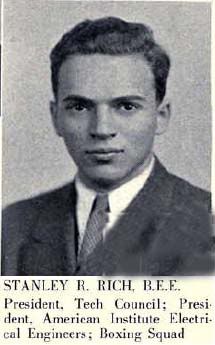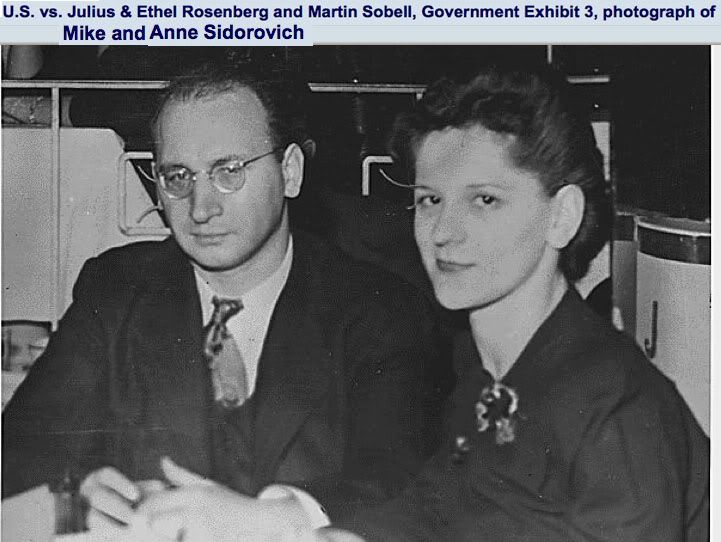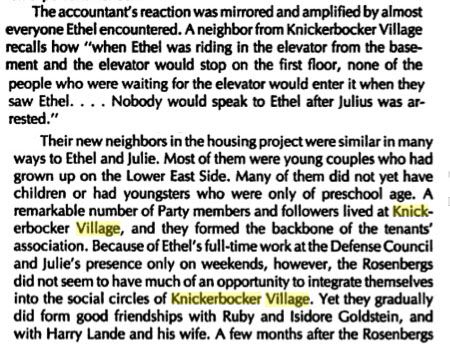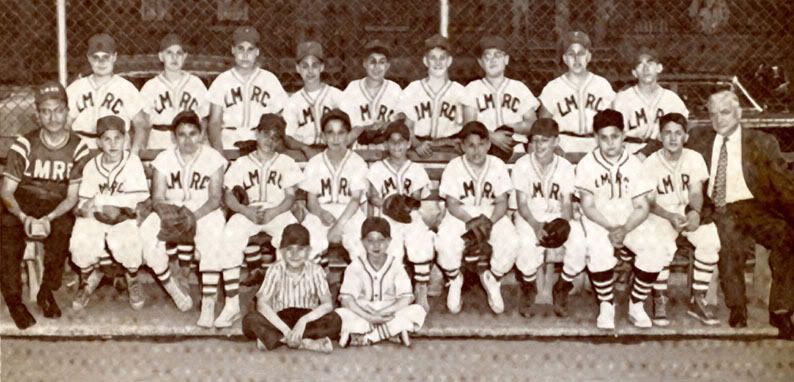Showing posts with label rosenbergs. Show all posts
Showing posts with label rosenbergs. Show all posts
Monday, July 16, 2012
Stanley Rich: FBI Files
Rich Rosenberg
Rich, from this sampling, seems to have come out innocent of any espionage charges.
Note, however, all the informants that are pressed into service.
Labels:
10 Monroe,
Helen Darion,
rosenbergs,
Stanley Rich
Whose Who In Knickerbocker Village History: Stanley Rich
Above, as seen in his graduation from CCNY in 1938.
Beginning in 1940 Stanley lived at 12 Monroe Street, apt HE5 and later moved to the 40 Monroe court. In 1943 his family moved to Cambridge, Mass. He knew Julius Rosenberg at CCNY and was suspected of being part of a group of engineers that Julius and Morton Sobell were attempting to recruit to gather classified information. In Rich's case it would be his expertise in radar.
From his nytimes obituary:
Stanley Rich, Entrepreneur, 76; Invented Submarine Sonar Device By WOLFGANG SAXON Published: November 23, 1993 Stanley Robert Rich, an entrepreneur and inventor who devised a scanning sonar for submarines in World War II, died on Sunday at Youville Hospital in Cambridge, Mass. He was 76 and lived in Grantham, N.H., and Wellesley Hills, Mass. The cause was cancer, his family said. Mr. Rich retired last month as chairman and technical director of Plasmachines Inc. in Natick, Mass., the last of several businesses he started over the years. Plasmachines is an environmental technology company that makes and sells air-pollution control equipment for combustion engines and industrial use. Mr. Rich was granted more than 60 United States patents and about 500 foreign ones since he began his career with the Navy Department of Civil Service and the Harvard University Underwater Sound Laboratory. It was at Harvard that he developed a scanning sonar for which the Navy got the patent and Mr. Rich was awarded two official commendations. A native of Manhattan, he graduated from the City College School of Technology, where he was president of the student body in 1938. After World War II, he worked for the Raytheon Corporation, heading several research departments and developing an ultrasonic machine tool and a motor-speed control system. Over four decades, beginning in 1950, Mr. Rich formed seven corporations to produce and market his inventions, which include high-intensity ultrasonic cleaning devices for industry, acoustic pollution controls and coal-cleaning devices. The companies he headed as president and as technical director include Rich-Roth Laboratories, Ultra-Viscoson Corporation and Teknika Inc. He published more than 50 technical papers, frequently lectured at business meetings and taught entrepreneurship as a Gordon Fellow at Babson College in Babson Park, Mass. He was co-founder of the M.I.T. Enterprise Forum and co-author with David Gumpert of "Business Plans That Win: Lessons From the MIT Enterprise Forum" (HarperCollins, 1987). The book is a business school text. Mr. Rich is survived by his wife, Shirley Cohen Rich; three daughters, the flutist Eugenia Zuckerman of Manhattan, Laurie Rich Alban of Rhinebeck, N.Y., and Dr. Julie Ingelfingfer of Cambridge, Mass., and seven grandchildren.
Pete Seeger: Woody Guthrie's 100th Anniversary and the lost song about the Rosenbergs
Pete Seeger, long-time Rosenberg Fund for Children Advisory Board member, performs this "lost" Woody Guthrie song about the Rosenbergs, at the RFC's 10th anniversary celebration in 2001
Celebrating Woody's 100th anniversary on American Routes
10 Monroe Street: 6th Floor and the FBI
Goff 6th Floor
During Julius Rosenberg's incarceration his cellmate Jerome Tartakow was utilized to gather information from Julius. Tartakow passed on a story that prior to her arrest Ethel took $7000 and a Leica camera from the Rosenberg KV apartment and placed it for safe keeping with a sympathizing neighbor. Subsequently there was systematic hunt for that unnamed neighbor and evidence the FBI thought would be further incriminating. Nothing was ever found and some believe Tartakow's story may have been invented. Sophie Goff, Irving's ex-wife was suspected. She was then living on the 6th floor. The above is a record of all of the investigation of people who lived on the 6th floor in 1952.
During Julius Rosenberg's incarceration his cellmate Jerome Tartakow was utilized to gather information from Julius. Tartakow passed on a story that prior to her arrest Ethel took $7000 and a Leica camera from the Rosenberg KV apartment and placed it for safe keeping with a sympathizing neighbor. Subsequently there was systematic hunt for that unnamed neighbor and evidence the FBI thought would be further incriminating. Nothing was ever found and some believe Tartakow's story may have been invented. Sophie Goff, Irving's ex-wife was suspected. She was then living on the 6th floor. The above is a record of all of the investigation of people who lived on the 6th floor in 1952.
Labels:
10 Monroe,
Irving Goff,
rosenbergs,
Sophie Goff
Sunday, July 15, 2012
Who's Who In Knickerbocker Village History: Michael and Ann Sidorovich
They lived at 10 Monroe Street from October 1942 until May of 1943 in apartment GB12.
Michael attended Seward Park High and later Stuyvesant High School. After graduation he fought in Spain as a member of the Abraham Lincoln Brigade. Michael and Ann were a suspected Communist spies who were friends and, for a short time neighbors, of the Rosenbergs. They were also witnesses before the Grand Jury during the Rosenberg trial.
Labels:
10 Monroe,
Abraham Lincoln Brigade,
rosenbergs,
who's who
Thursday, September 29, 2011
Dr.George Bernhardt Of 40 Monroe Street
bernhardt
His testimony was a big blow for the defense. Bernhardt's phone number in 1946 He lived in the East Court, but he had his office n Park Slope, Brooklyn.
Wednesday, September 28, 2011
Life At 10 Monroe, 1940's
Before it was explained as to why there were so many people living at either 10 or 40 Monroe Street in 1946, it was sad to learn of the Ethel's experience with her building neighbors. Many of those names were the parents of friends' families I knew and I wouldn't have thought they would have been un-neighborly, regardless of political convictions. But then again, the witch hunt was in full force. The above excerpt is from Radosh and Milton's Rosenberg book.
Thursday, January 13, 2011
The ILGWU: August 1, 1938
Life Ilgwu 1938
Displayed at the Grey Art Gallery in remembrance of the Triangle Shirtwaist Fire 100th anniversary. I was curious to find out whether Yetta Henner was still alive. I assumed she married Hy Stofsky, her boyfriend in the article. Sadly, a Yetta Stofsky passed away in 1995 in Florida at the same age Yetta Henner would have been. Living where she did on Rivington Street her family may have known the Greenglass family from around the corner. She was around the same age as Ethel.
Displayed at the Grey Art Gallery in remembrance of the Triangle Shirtwaist Fire 100th anniversary. I was curious to find out whether Yetta Henner was still alive. I assumed she married Hy Stofsky, her boyfriend in the article. Sadly, a Yetta Stofsky passed away in 1995 in Florida at the same age Yetta Henner would have been. Living where she did on Rivington Street her family may have known the Greenglass family from around the corner. She was around the same age as Ethel.
Labels:
ilgwu,
rosenbergs,
triangle shirtwaist factory fire
Sunday, July 4, 2010
4th Of July Special: The House I Live In
with the original lyrics written by Abel Meeropol, aka Lewis Allen.
What is America to me?on a previous post of a Sinatra version of this song Mike Meeropol commented about his father's displeasure with deleted lyrics
A name, a map or a flag I see,
A certain word, "Democracy",
What is America to me?
The house I live in,
The friends that I have found,
The folks beyond the railroad
and the people all around,
The worker and the farmer,
the sailor on the sea,
The men who built this country,
that's America to me.
The words of old Abe Lincoln,
of Jefferson and Paine,
of Washington and Jackson
and the tasks that still remain.
The little bridge at Concord,
where Freedom's Fight began,
of Gettysburg and Midway
and the story of Bataan.
The house I live in,
my neighbors White and Black,
the people who just came here
or from generations back,
the town hall and the soapbox,
the torch of Liberty,
a home for all God's children,
that's America to me.
The house I live in,
the goodness everywhere,
a land of wealth and beauty
with enough for all to share.
A house that we call "Freedom",
the home of Liberty,
but especially the people,
that's America to me.
Just a note about my dad's lyrics for the HOUSE I LIVE IN. As viewers of the documentary Strange Fruit know, my father was not very pleased that in the Frank Sinatra version of "HOUSE" a line:
"my neighbors white and black" was deleted from the song (it's in the Paul Robeson version of it ... someone told me a Josh White version also has that line) ...
In 1945, a song that celebrated "all races and religions" in a generic way was okay but no specific mention of black equality. Also, the group of kids in the film version were all white -- they were chasing a kid whose "religion" they didn't like!
Monday, June 14, 2010
The Brother Who Sent the Rosenbergs to the Electric Chair
a clip from a film by Clara Kuperberg and Robert Kuperberg, Wichita Films.
events surrounding the release of the film
Fri, 06/18/2010
20th Anniversary Benefit Reception
Join us at one of 20 events in 20 cities in 20 months, to mark the Rosenberg Fund for Children's 20th anniversary!
Meet Robert Meeropol and hear his inspiring story, at a benefit to celebrate 20 years of the RFC's work helping the children of targeted activists in the New York City area and across the country. RFC beneficiary families have been active in the struggles to wage peace; safeguard the environment; preserve civil liberties; and organize on behalf of workers, prisoners, and others whose human rights are under threat.
At the home of Alice Shechter & Lee Ornati
Co-hosted by Rachel Meeropol & Tomas Hunt, Terri Nilliasca & Jeff Meyer, Katie Unger, and Billy Rothberg & Gail Miller
Friday, June 18th
5:00-7:00 pm
Brooklyn, NY (this event is in a private residence but is open to the public. For info including street address, contact Alice with the info below)
To RSVP by June 16th contact Alice at alishec@aol.com or (917) 207-2097
Donations to the RFC, a 501(c)(3) organization, are tax-deductible.
Sat, 06/19/2010
"The Brother Who Sent the Rosenbergs to the Electric Chair"
Join Robert Meeropol,
son of Ethel and Julius Rosenberg,
on the 57th anniversary of his parents’ execution
at the New York premiere of a film about his dramatic family history
4:00-6:00 pm (doors open at 3:30)
Judson Memorial Church*
55 Washington Sq. South, New York, NY
(handicap entrance - 243 Thompson)
$10 admission at the door (no advance tickets or reservations)
proceeds benefit the Rosenberg Fund for Children,
celebrating 20 years of helping the children of targeted activists
Following the film, Robert will answer questions; sign copies of his memoir, AN EXECUTION IN THE FAMILY; and describe his 20-year journey leading the Rosenberg Fund for Children.
Friday, September 11, 2009
Automats, Taxi Dances, and Vaudeville: Let's Have Another Cup O' Coffee
There's a new book out called Automats, Taxi Dances, and Vaudeville, by David Freeland, The author also has a new website called Gotham Lost and Found The KV crew has fond memories of the automat we went to after bowling at City Hall Lanes. I put this together with images I discovered of automats and automat related items.
"Let's Have Another Cup O' Coffee" (1932) Phil Spitalny's Music
[Verse:]
Why worry when skies are gray
Why should we complain
Let's laugh at the cloudy day
Let's sing in the rain
Songwriters say the storm quickly passes
That's their philosophy
They see the world through rose-colored glasses
Why shouldn't we?
[Refrain:]
Just around the corner
There's a rainbow in the sky
So let's have another cup o' coffee
And let's have another piece o' pie!
Trouble's just a bubble
And the clouds will soon roll by
So let's have another cup o' coffee
And let's have another piece o' pie
Let a smile be your umbrella
For it's just an April show'r
Even John D. Rockefeller
Is looking for the silver lining
Mister Herbert Hoover
Says that now's the time to buy
So let's have another cup o' coffee
And let's have another piece o' pie!
[Alternate Lines:]
Things that really matter
Are the things that gold can't buy
from Joe Bruno:
In the Rosenberg book I just read, the Russian spy/handler Feklisov said he met Julius Rosenberg frequently at the Automat on 38th Street and Broadway. They'd walk in separate, sit at the same table facing each other, like strangers. Then Julius would leave an envelope on the table, and cover it with a newspaper, probably the Daily Worker, then get up and leave. No words were exchanged.
Feklisov would then stay awhile, then get up and leave, taking the newspaper and envelope with him.
The only automat I remember was on 42 St. around 2 or 3rd Avenue. What I remember about the automat was that the coffee really sucked.
Joe, I if they were good spies they wouldn't have hid it under the Daily Worker
Thursday, August 13, 2009
More Photos Of The Rosenberg Vigil From Life
The first few slides are of David Greenglass and David Gold giving testimony before the grand jury. There are also images of the ongoings outside of Sing Sing
Rosenberg Life Pt2
Rosenberg Life Pt2
The Obscure Connection Between Guss' Pickles And The Rosenbergs
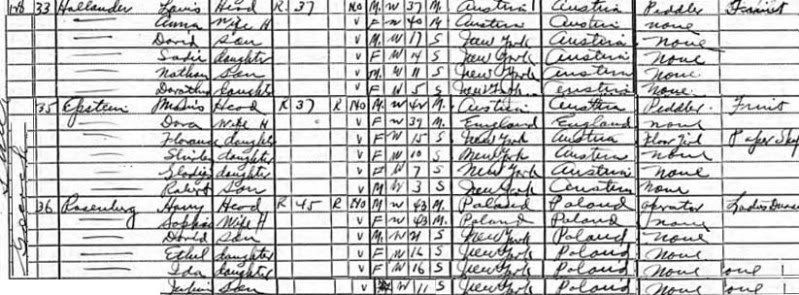
In the 1930 census Julius Rosenberg was living in the same building, 128 Goerck Street (perhaps the same floor) as the Hollander family, a pickle royalty family of the lower east side. Nathan Hollander, who recently passed away, and Julius Rosenberg were the same age and probably went to school together. 128 Goerck Street was part of the famous Lavanburg Houses.
The Hollanders were mentioned on the blog previously last May
from Michael Blitz
I am very sorry to inform you that my grandfather passed away yesterday, May 18th 2009. We lost the last of the great picklemen. My great grandfather Louis Hollander started selling pickles and produce in 1903 with a horse drawn carriage. And yes it is true that Izzy Guss got his start in the business from my great grandfather. My father Bert Blitz and I were also in the pickle business for many years.
Monday, August 10, 2009
David Alman: Testifying Before HUAC: 1955
alman-huac
The anticipated revenge of HUAC for being involved with the Committee To Save The Rosenbergs
about Francis Walter from wikipedia
The anticipated revenge of HUAC for being involved with the Committee To Save The Rosenbergs
about Francis Walter from wikipedia
Francis Eugene Walter (May 26, 1894 – May 31, 1963) was a Democratic member of the U.S. House of Representatives from Pennsylvania.
Francis Walter was born in Easton, Pennsylvania. He attended Lehigh University in Bethlehem, Pennsylvania, and George Washington University and Georgetown University in Washington, D.C.
During both World War I and World War II he served in the air service of the United States Navy. He was the director of the Broad Street Trust Company in Philadelphia, Pennsylvania, and of the Easton National Bank in Easton, Pennsylvania. From 1928 to 1933 he was the Solicitor of Northampton County, Pennsylvania. He was a delegate to the 1928 Democratic National Convention. He was elected as a Democrat to the 73rd United States Congress and served until his death in Washington, D.C.
Walter is best known for the McCarran-Walter Act, passed over President Truman's veto in 1952, which continued the quota system based on the national origin of immigrants introduced in 1924 and allowed the United States government to deport and bar from entry those identified as subversives, particularly members and former members of the Communist Party.
A noted immigration historian has characterized Walter's views as "reactionary and racist." A strong anti-Communist, Walter went on to serve as chairman of the United States House Un-American Activities Committee during the 84th through 88th Congresses. Walter also served as a director of the Pioneer Fund, a foundation best known for its advocacy of IQ variation among races.
Walter appeared in a central role in the 1960s-era U.S. government anti-Communist propaganda film Operation Abolition. Historical footage of Walter also appears in the 1990 documentary film Berkeley in the Sixties..
He is buried in Arlington National Cemetery.
Photos Of Rosenberg Vigil In Washington D.C.: 1953
Rosenberg Dc Vigil
These are from Life Magazine. Many of them show Julius Rosenberg's mother Sophie with her grandsons Michael and Robert.
These are from Life Magazine. Many of them show Julius Rosenberg's mother Sophie with her grandsons Michael and Robert.
10,000 Rally To Save The Rosenbergs: May 4, 1953
Rosenberg Rally
A major part of David and Emily Alman's book Exoneration concerns the efforts of National Committee To Reopen the Rosenberg Case David and Emily were two of the leaders in that effort. The second page n the document above shows a vigil in Washington D.C.
A major part of David and Emily Alman's book Exoneration concerns the efforts of National Committee To Reopen the Rosenberg Case David and Emily were two of the leaders in that effort. The second page n the document above shows a vigil in Washington D.C.
Sunday, August 9, 2009
David and Emily Alman (of 10 Monroe Street)

No matter what your feelings might be about the Rosenberg case you can't help but tip your hat to the courage and conviction of the Almans.
from the Saratogian of 9/22/2002
Attorney revisits traitor case of Rosenbergs/Sobell at Skidmore
In 1953, Americans Ethel and Julius Rosenberg and Morton Sobell were convicted of conspiring to steal classified information about the atomic bomb on behalf of the Soviet Union. The Rosenbergs were sentenced to death, and Sobell was sentenced to 30 years in prison. Sunday, September 22, 2002, By MAE G. BANNER
From the outset of the case, many believed that a gross miscarriage of justice was being done. One of those who questioned the trial and sentence was Dr. Emily Arnow Alman, a professor emerita and former chairwoman of the Sociology Department at Douglass College, Rutgers University. Dr. Alman also is an attorney who has received many honors for her service to clients and to the field of matrimonial law. Now a resident of Ballston Spa, Dr. Alman will give a talk, ''The Case against Julius and Ethel Rosenberg and Morton Sobell: Was Justice Done?'' at 7:30 p.m. Monday, Sept. 23, in Wilson Chapel on the Skidmore College campus. The talk is free and open to the public. Dr. Alman will describe the social and political context of the time, 1950-53, in which the Rosenberg-Sobell case arose. Also, she will present evidence to support her conclusion, arrived at through decades of study, that the defendants were wrongly convicted. In 1951, Dr. Alman became interested and involved in the Rosenberg-Sobell case. After reading the trial transcript, she was convinced that a gross miscarriage of justice had occurred. She helped to form the National Committee to Secure Justice in the case. The committee's goals were to obtain a new trial for the defendants and/or clemency for the Rosenbergs. New evidence surfaced, including a written confession by David Greenglass, the prosecution's chief witness, that he had agreed to testify to matters he knew nothing about first-hand, but that had been described to him by the FBI. The committee published 10,000 copies of the verbatim trial transcript and sent copies to editors, government officials, scientists, members of Congress and prominent persons. Similar committees arose in major cities around the country, and their efforts culminated in a vigil at the White House. There was also an outpouring of support from around the world. The New York Times estimated that at least 3 million Americans eventually petitioned the White House for clemency for the Rosenbergs. In 1956, three years after the execution of the couple, Dr. Alman and her husband David were called to testify before the House Un-American Activities Committee, where they defended the right of Americans to criticize prosecutorial and judicial actions that led to miscarriages of justice. While on sabbatical leave from Rutgers in 1978, Dr. Alman used the Freedom of Information Act and other sources to obtain many definitive documents bearing on the case, including a pre-trial assurance by Federal Judge Irving Kaufman to the Department of Justice that he intended to sentence Julius Rosenberg to death. Other documents came from the Atomic Energy Commission, the State Department and the Department of Justice. Dr. Alman and her husband are now completing a book on the case that will carry the first full account of the activities of the Committee to Secure Justice and of the campaign for a new trial and clemency that they spearheaded. The book will examine the case in light of David Greenglass's televised confession in December, 2001, that he had committed perjury at the Rosenberg-Sobell trial at the instruction of the prosecution. The Skidmore lecture is co-sponsored by the Saratoga Springs chapter of Hadassah, which is the largest Jewish women's Zionist organization in the U.S.
from Emily's 2004 obituary
Emily Arnow Alman BALLSTON SPA -- Emily Arnow Alman of Ballston Spa died on March 18, 2004, at the age of 82. Dr. Alman was a sociologist and attorney.At her retirement from law, she was honored with a plaque by the Middlesex County Bar Association of New Jersey that read in part, 'The fact that you often faced overwhelming odds could not quench your indomitable spirit.' Dr. Alman was committed to advancing the causes of battered women, the poor and the rights of children in broken homes to have access to both their parents and grandparents. Dr. Alman received her B.A. at Hunter College in 1945 and her M.A. and Ph.D. at the New School For Social Research in 1963.She received her law degree at Rutgers University Law School in 1977.She taught sociology at Rutgers University's Douglas College from 1960 to 1986 and served as chairperson of the Department of Sociology for eight years.Her chief interests in sociology and law were family law, bias law and public policy law and interactions between social agencies and institutions and various population groups.
Dr. Alman's creative works include 'Ride the Long Night,' a novel (McMillan, 1963), and 'The Ninety-First Day,' a semi-documentary film on mental illness and shortcomings in institutional treatment (1963). 'We Were There,' a book in progress at the time of her death and co-authored with her husband, is based on government documents.
Dr. Alman was persuaded by the trial record to become one of the founders of a committee in 1951, the National Committee to Secure Justice in the Rosenberg-Sobell Case, to secure a new trial or clemency for the Rosenbergs and reduction of Morton Sobell's 30-year sentence. Dr. Alman was also a chairperson of the Concerned Citizens of East Brunswick, N.J., from 1970-78, which was instrumental in causing the New Jersey Turnpike to erect noise abatement berms along portions of the turnpike.She was also a member of the American and New Jersey bar associations and a number of professional associations and organizations for the protection of battered women.
Dr. Alman won first prize at the American Film Festival in 1964 for 'The Ninety-First Day' and the Appleton Award for dedicated service to the legal community.A short biography of her appears in Who's Who in American Women. Prior to becoming a sociologist and lawyer, Dr. Alman was a New York City probation officer.From 1957 to 1970, she and her husband and children were farmers in Englishtown, N.J. In 1972, Dr. Alman was an Independent candidate for mayor of East Brunswick, N.J. She is survived by her husband, David, whom she met at the age of 13 and married in 1940 at the age of 18 and with whom she celebrated every day of her life.
Saturday, August 8, 2009
The Spy That Got Away
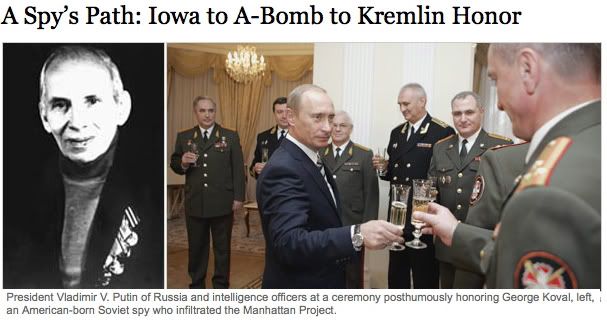
an excerpt from the nytimes of October 2007 also referenced at the National Committee to Reopen the Rosenberg Case
A Spy’s Path: Iowa to A-Bomb to Kremlin Honor
By WILLIAM J. BROAD
He had all-American cover: born in Iowa, college in Manhattan, Army buddies with whom he played baseball.
George Koval also had a secret. During World War II, he was a top Soviet spy, code named Delmar and trained by Stalin’s ruthless bureau of military intelligence.
Atomic spies are old stuff. But historians say Dr. Koval, who died in his 90s last year in Moscow and whose name is just coming to light publicly, was probably one of the most important spies of the 20th century.
On Nov. 2, the Kremlin startled Western scholars by announcing that President Vladimir V. Putin had posthumously given the highest Russian award to a Soviet agent who penetrated the Manhattan Project to build the atom bomb.
The announcement hailed Dr. Koval as “the only Soviet intelligence officer” to infiltrate the project’s secret plants, saying his work “helped speed up considerably the time it took for the Soviet Union to develop an atomic bomb of its own.”
Since then, historians, scientists, federal officials and old friends have raced to tell Dr. Koval’s story — the athlete, the guy everyone liked, the genius at technical studies. American intelligence agencies have known of his betrayal at least since the early 1950s, when investigators interviewed his fellow scientists and swore them to secrecy.
The spy’s success hinged on an unusual family history of migration from Russia to Iowa and back. That gave him a strong commitment to Communism, a relaxed familiarity with American mores and no foreign accent.
“He was very friendly, compassionate and very smart,” said Arnold Kramish, a retired physicist who studied with Dr. Koval at City College and later worked with him on the bomb project. “He never did homework.”
Stewart D. Bloom, a senior physicist at the Lawrence Livermore National Laboratory in California, who also studied with Dr. Koval, called him a regular guy.
“He played baseball and played it well,” usually as shortstop, Dr. Bloom recalled. “He didn’t have a Russian accent. He spoke fluent English, American English. His credentials were perfect.”
Once, Dr. Bloom added, “I saw him staring off in the distance and thinking about something else. Now I think I know what it was.”
Over the years, scholars and federal agents have identified a half-dozen individuals who spied on the bomb project for the Soviets, especially at Los Alamos in New Mexico. All were “walk ins,” spies by impulse and sympathetic leaning rather than rigorous training.
By contrast, Dr. Koval was a mole groomed in the Soviet Union by the feared G.R.U., the military intelligence agency. Moreover, he gained wide access to America’s atomic plants, a feat unknown for any other Soviet spy. Nuclear experts say the secrets of bomb manufacturing can be more important than those of design.
Los Alamos devised the bomb, while its parts and fuel were made at secret plants in such places as Oak Ridge, Tenn., and Dayton, Ohio — sites Dr. Koval not only penetrated, but also assessed as an Army sergeant with wide responsibilities and authority.
“He had access to everything,” said Dr. Kramish, who worked with Dr. Koval at Oak Ridge and now lives in Reston, Va. “He had his own Jeep. Very few of us had our own Jeeps. He was clever. He was a trained G.R.U. spy.” That status, he added, made Dr. Koval unique in the history of atomic espionage, a judgment historians echo.
Washington has known about Dr. Koval’s spying since he fled the United States shortly after the war but kept it secret.
“It would have been highly embarrassing for the U.S. government to have had this divulged,” said Robert S. Norris, author of “Racing for the Bomb,” a biography of the project’s military leader.
Historians say Mr. Putin may have cited Dr. Koval’s accomplishments as a way to rekindle Russian pride. As shown by a New York Public Library database search, the announcement has prompted detailed reports in the Russian press about Dr. Koval and his clandestine feats.
“It’s very exciting to get this kind of break,” said John Earl Haynes, a Library of Congress historian and an authority on atomic spying. “We know very little about G.R.U. operations in the United States.”
Friday, August 7, 2009
David Alman
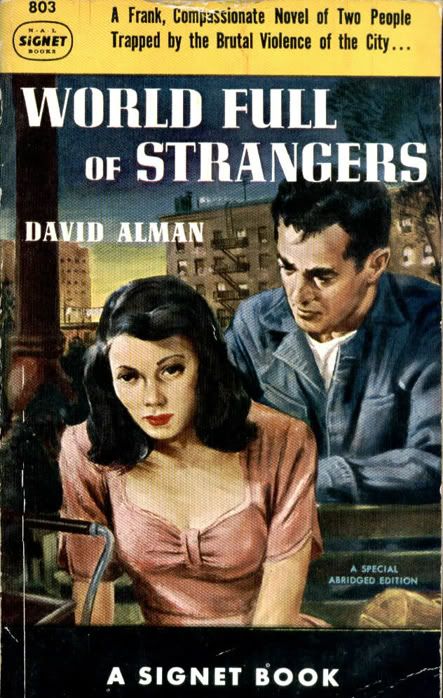
With the help of Leonard Lehrman of National Committee To Reopen the Rosenberg Case
and Michael Meeropol I was able to get in touch with David Alman. What a great discovery, both personal and historical
David,
I lived in KV from about 1941 to 1957 with my wife, Emily, and two daughters, Michelle, now a physician living in India, and Jennifer, now a lawyer, formerly practicing in NJ, NY and about to take bar exam in Florida. My wife became a sociology professor at Douglas College at Rutgers University, and then became a lawyer in NJ. Emily and I met at Seward Park High School, on Essex Street, in 1936.
I was a NY State Parole Officer for about a year when we lived at KV . Became a writer and Emily and I got interested in the Rosenberg-Sobell case in 1951 and were involved in the clemency campaign on behalf of the Rosenbergs. In 1995 we began writing a book on the case, but Emily died in 2004 before we had finished it. I completed the book and, since I'm now 90, decided to forego the 2-3 years of making the rounds of publishers, and arranged with a small press, Green Elms, to publish it. It's called Exoneration, and we printed a draft of the book about 3 months ago to circulate among historians and lawyers for their reactions. Official publication will be at the beginning of 2010.
Checked out the KV website. Terrific, but wonder where you find the time to keep it up.
Feel free to be in touch if you have any questions.
Subscribe to:
Posts (Atom)

